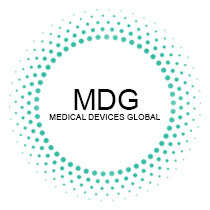In the rapidly evolving landscape of medical devices, the shift toward patient-centric care is a driving force behind innovation. This article delves into the insights shaping the patient-centric future of medical devices, focusing on how these technologies are set to improve patient experiences and outcomes.
1. Empowering Patients through Data
Medical devices are increasingly designed to empower patients with real-time data. From wearable fitness trackers to continuous glucose monitors, these devices enable individuals to actively monitor their health, make informed decisions, and share data with healthcare providers for personalized care plans.
2. Telemedicine and Remote Monitoring
The rise of telemedicine has accelerated the development of remote monitoring devices. Patients can now receive continuous care from the comfort of their homes. These devices provide healthcare providers with real-time data, enabling timely interventions and reducing hospital readmissions.
3. User-Friendly Interfaces
Medical device manufacturers are prioritizing user-friendly interfaces to enhance patient engagement. Devices with intuitive interfaces and clear instructions empower patients to manage their health effectively, improving adherence to treatment regimens.
4. Personalized Treatment Plans
Advancements in AI and data analytics allow for the creation of personalized treatment plans based on a patient’s unique health profile. These plans consider genetic factors, lifestyle choices, and real-time health data to optimize treatment effectiveness.
5. Minimally Invasive Devices
Minimally invasive medical devices reduce patient discomfort, recovery times, and complications. Procedures that once required open surgery are now performed with tiny incisions and advanced robotic assistance, improving patient outcomes.
6. Home-Based Rehabilitation
Rehabilitation devices are transitioning from clinical settings to patients’ homes. These devices, often incorporating gamification and virtual reality, motivate patients to engage in rehabilitation exercises, enhancing recovery and reducing the need for in-person therapy sessions.
7. Remote Consultations and Telehealth
Telehealth solutions integrated into medical devices facilitate remote consultations with healthcare providers. Patients can receive expert advice, diagnosis, and treatment recommendations without the need for physical office visits.
8. Medication Adherence Devices
Smart medication adherence devices remind patients to take their medications as prescribed. These devices are particularly beneficial for individuals with chronic conditions, helping them manage their health and reduce the risk of complications.
9. Voice-Activated Healthcare
Voice-activated devices and virtual assistants are becoming valuable tools for patients. These technologies enable individuals with limited mobility or visual impairments to control medical devices, access information, and interact with healthcare providers.
10. Mental Health and Wellness Devices
The integration of mental health and wellness features into medical devices acknowledges the importance of holistic care. Devices offering stress management, meditation guidance, and sleep tracking promote mental well-being alongside physical health.
Conclusion: A Patient-Centric Revolution
The patient-centric future of medical devices places individuals at the center of their healthcare journey. These innovations empower patients with data, control, and personalized care, ultimately leading to improved health outcomes and enhanced quality of life. Medical Devices Global remains dedicated to providing comprehensive coverage and insights into the dynamic world of patient-centric medical device technologies and their profound impact on the future of healthcare.


